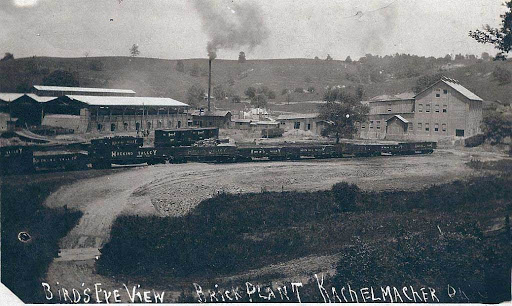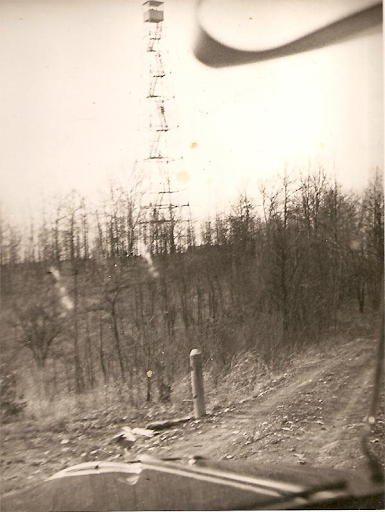Little Cities of Black Diamonds

Comprising one of the three major historic themes that are central to the Little Cities of the Black Diamonds (LCBD) story is that of conservation. Perhaps more apparent than the historic stories that lie within the hills of the LCBD microregion is the natural landscape and topography of the land itself. Amidst the tapestry of rich architecture that comprises many of the LCBD communities lies the vibrant Wayne National Forest (WNF), Ohio’s only National Forest. Unique from the rest of Ohio, the LCBD microregion sits in the rugged, densely forested foothills of the Appalachian mountains, the oldest mountain chain in the United States. Our region sits in the unglaciated region of Ohio.The LCBD microregion looks a lot different today than it did during the Hocking Valley Coal Boom of 1870-1925. Those who called this region home during the coal boom era would’ve seen barren, moonscape-like hillsides, eroded valleys, treeless ridges, and acid-laden streams and creeks. The natural landscape, through a collaborative approach between federal and state governments coupled with a robust grassroots effort from community members, has helped to restore the land to a flourishing second-growth mix-hardwood forest as the replenished waters of Monday and Sunday Creek flow through the region, emptying into the Hocking River. The natural landscape that defines the LCBD microregion mirrors the same resiliency, grit, persistence, and resolve of those who make their home here.
Central to the CBD’s conservation story is that of the forest. As pioneers and immigrants flooded the LCBD region after the Civil War to work in the coalfields, they clear cut timber to make homes, built railroad lines, constructed downtown buildings, and erected wooden coal tipples. Coupled with the clay that helped shape the brick industry in the region, the Hocking Valley Coal Boom fueled the growth of the LCBD region and brought America into the age of modernity. The boom was in part fueled by the abundance of natural timber that lies within the hills of the LCBD region. While iron furnaces were not as prevalent in the LCBD region, they still required roughly 3 acres of timber a day to fuel. The once heavily forested area quickly became barren due to coal companies clearing the land for coal mines, coal camps, and towns. As a result of the clearcutting, the land quickly began to suffer. Trees were cut down, often leaving hillsides and ridges exposed and depleting the once nutrient-rich soil. As a result, flooding and erosion occurred frequently decimating the hillsides. Thus the value of land quickly depreciated due to it becoming marginal by the end of the Hocking Valley Coal Boom in the mid-1920s. In addition to the forest, the watersheds of Sunday and Monday Creek were polluted from the mine drainage seeping into the watersheds from coal mines, causing both watersheds to become acidic. Thus both Sunday and Monday Creek became too acidic to sustain aquatic life.

OHIO’S ONLY NATIONAL FOREST
In November of 1934, during the throes of the Great Depression, the State of Ohio passed legislation to establish the Wayne National Forest in southeastern Ohio. The United States Forest Service quickly mobilized to stem erosion, reforest the land with massive tree plantings, and prevent wildfires. Central to this effort was the Civilian Conservation Corps (CCC). The CCC was a result of FDR’s New Deal and FDR’s personal quest in helping to bring the ethic of conservation and stewardship to the forefront of American consciousness. The CCC played an instrumental role in helping to develop forest access roads, erect fire towers, and communication lines, and construct recreational facilities. In fact, one physical artifact in the Wayne that is a harbinger of the CCC effort is the numerous pine plantations scattered throughout the LCBD region. Pines are not native to Ohio and were planted by the CCC as a way to help stabilize the soil and quickly replenish the nutrients back into the ground. The pine plantations stand as a physical testament to the legacy and work of the CCC. Interestingly, the CCC boys also partnered with the Works Progress Administration (WPA) to unsuccessfully dig trenches to help put out mine fires that were ignited during the Great Hocking Valley Coal Strike of 1884-1885. Coupled with the ongoing efforts of the USFS and contributions from dedicated and passionate community members, the forest is now filled with vibrant second-growth mixed hardwoods that attract visitors from all over to visit to view the splendor and awe of Ohio’s only National Forest.
A RIVER (CREEK) RUNS THROUGH IT
In addition to the federal government establishing the Wayne National Forest, passionate community members throughout the microregion banded together and partnered with Rural Action, the Ohio Department of Natural Resources, and the United States Forest Service to help restore the Sunday and Monday Creek watersheds to their natural state. Through this collaborative, place-based, community effort the spirit of conservation can be seen. The story of Sunday and Monday Creek restoration efforts is one that is emblematic of the ingenuity and deep love of place locals have for the LCBD microregion. In the LCBD region, there is a self-reliant spirit that permeates through the people and the land that comprise this region.
The watersheds have been revitalized and now sustain an array of aquatic life. Evoking the Appalachian trademark of resiliency and having an unwavering love of place, the Sunday and Monday Creek waters now teme with crawdads, frogs, and other aquatic life.
The Monday Creek Restoration Project and the Sunday Creek Watershed Group are two instrumental organizations, through Rural Action, that work to enhance the quality of both watersheds and to reinvigorate the streams and creeks throughout the region. In addition, carrying on the LCBD educational ethic both the MCRP and the SCWG provide public education demonstrating lessons of stewardship and instilling the ethic of conservation in future generations of the LCBD community.
FROM EXPLOITATION TO RECREATION
The LCBD region provides a landscape that is recovering, reinvigorating, and robust. The story of LCBD’s landscape is a quintessential Appalachian story. Once exploited and extracted for the amount of coal that could be mined out of the land, the landscape and the aesthetic and restorative qualities it exudes provides a great natural asset to the region. The Wayne National Forest, coupled with the creeks and streams that meander through the land provide ample outdoor recreational opportunity thus allowing visitors a chance to fully immerse themselves in a land that still possesses the scars of its past, but is a beacon to a more sustainable and just way forward. The LCBD region and the village of Shawnee is the proud home of the Buckeye Trail Assiocation’s (BTA) headquarters. The BTA traverses much of the LCBD region and is a great way to experience the natural splendor and history of the landscape. After exploring the LCBD Archives, headover next door and pay the BTA visit!